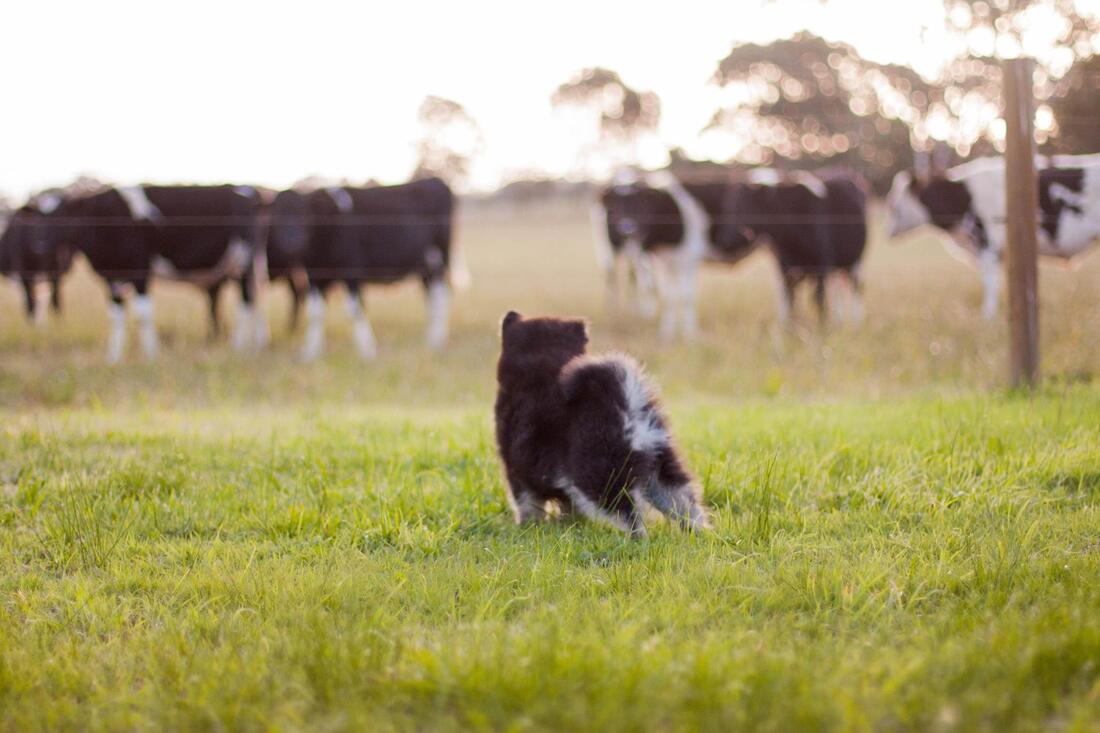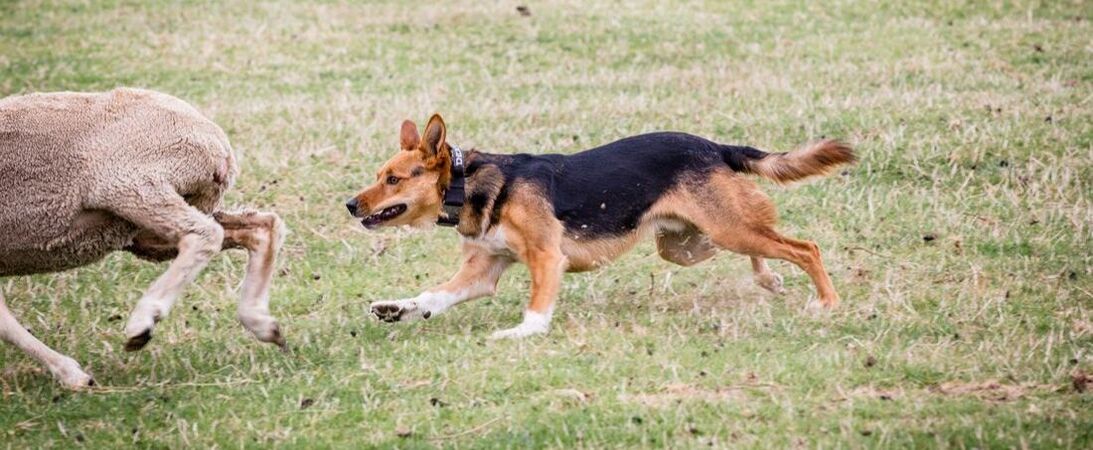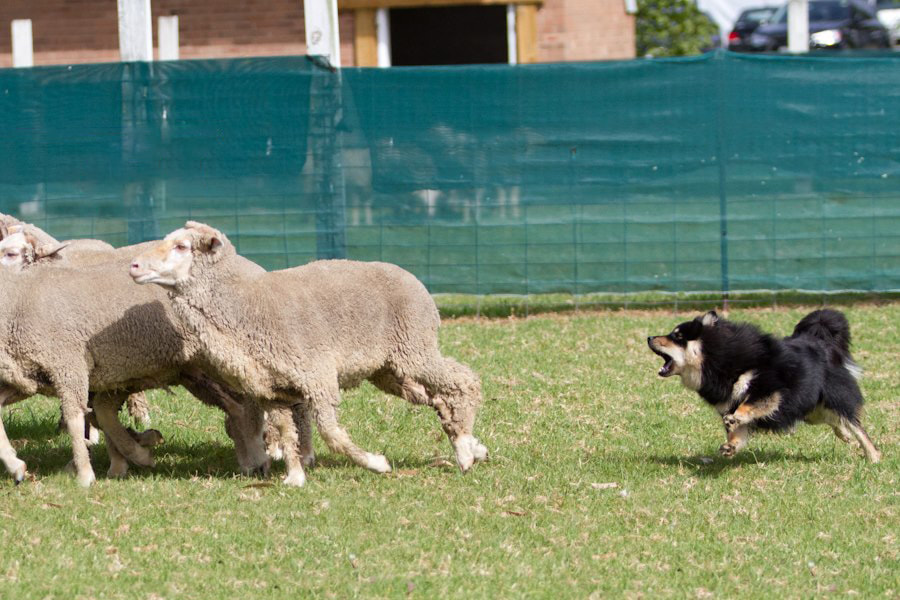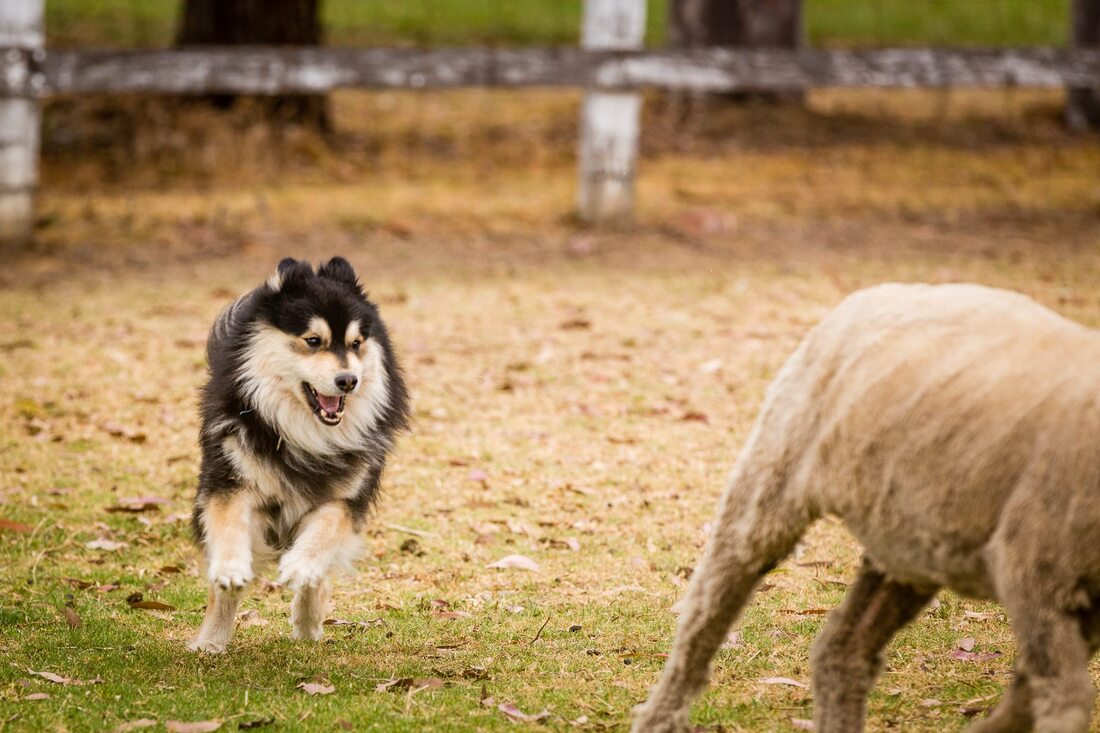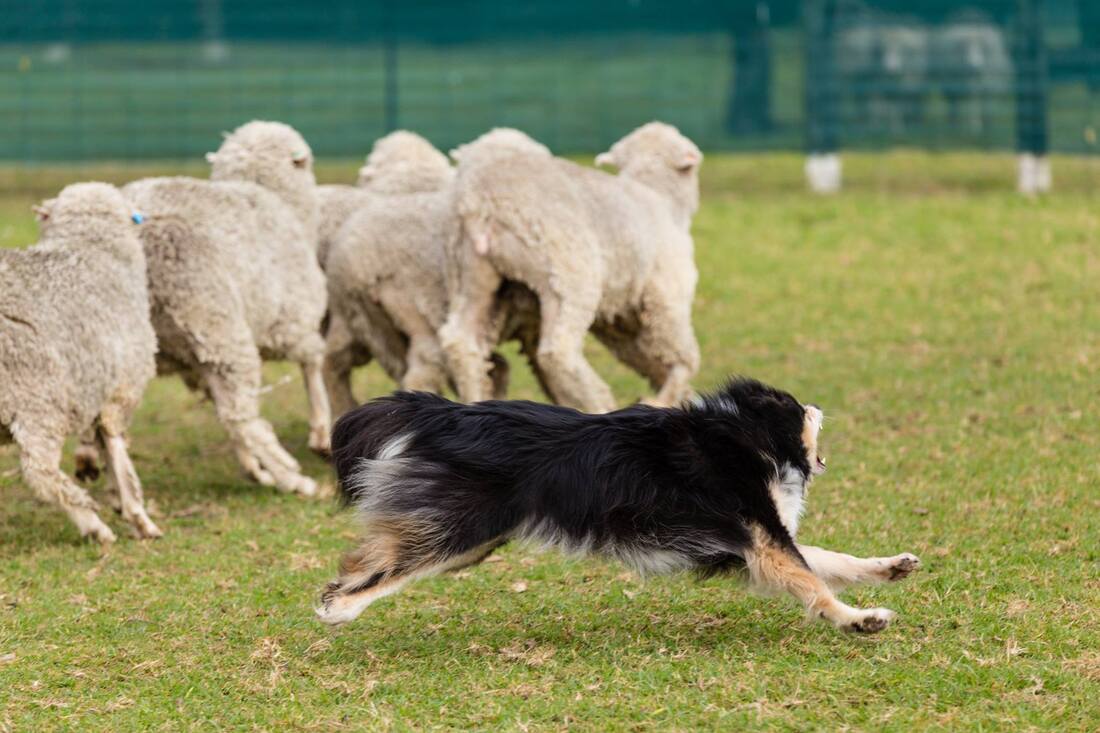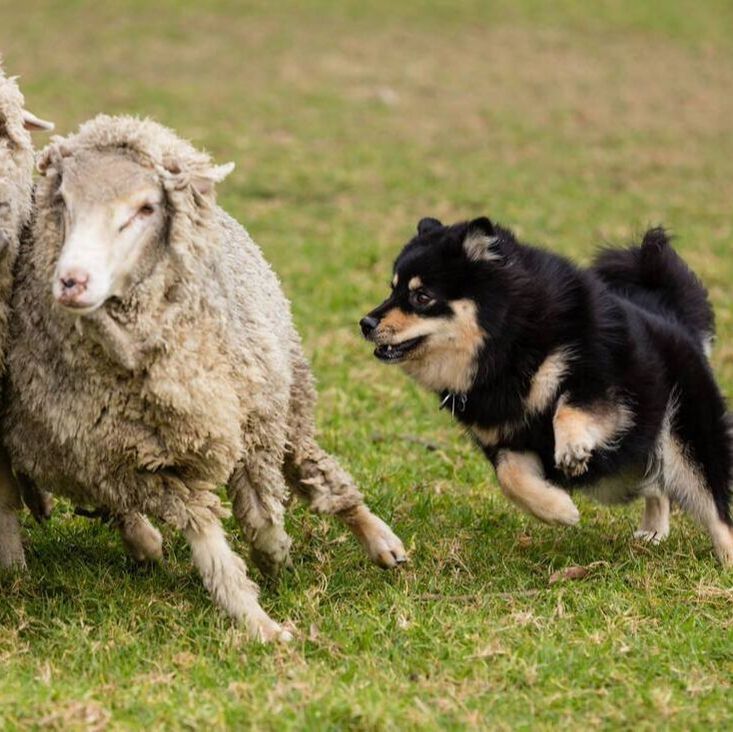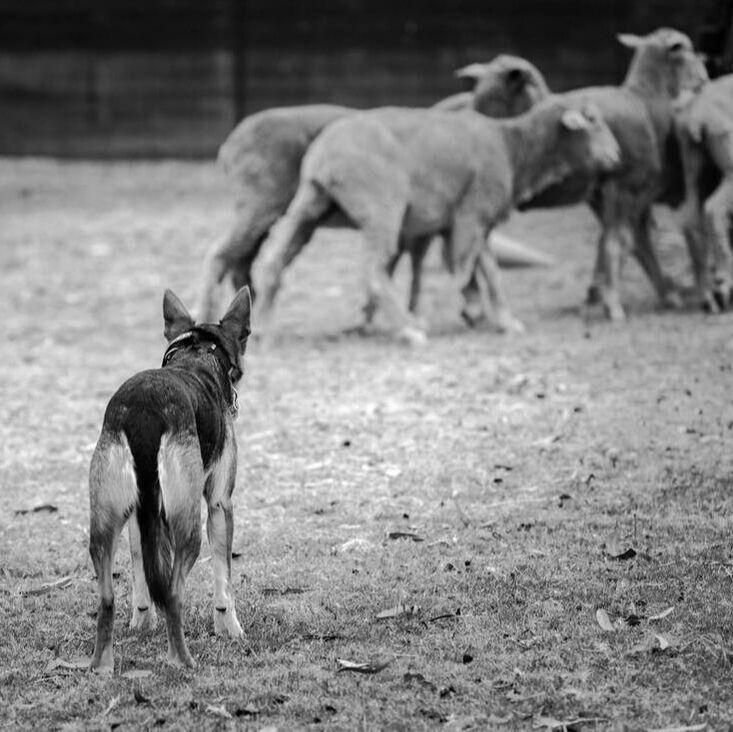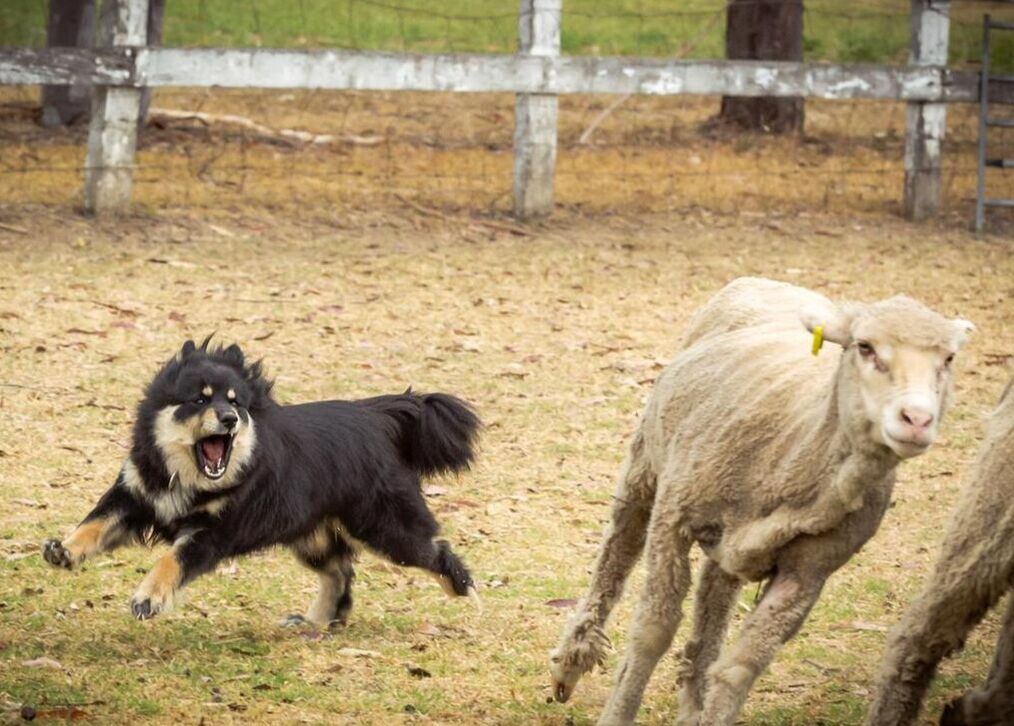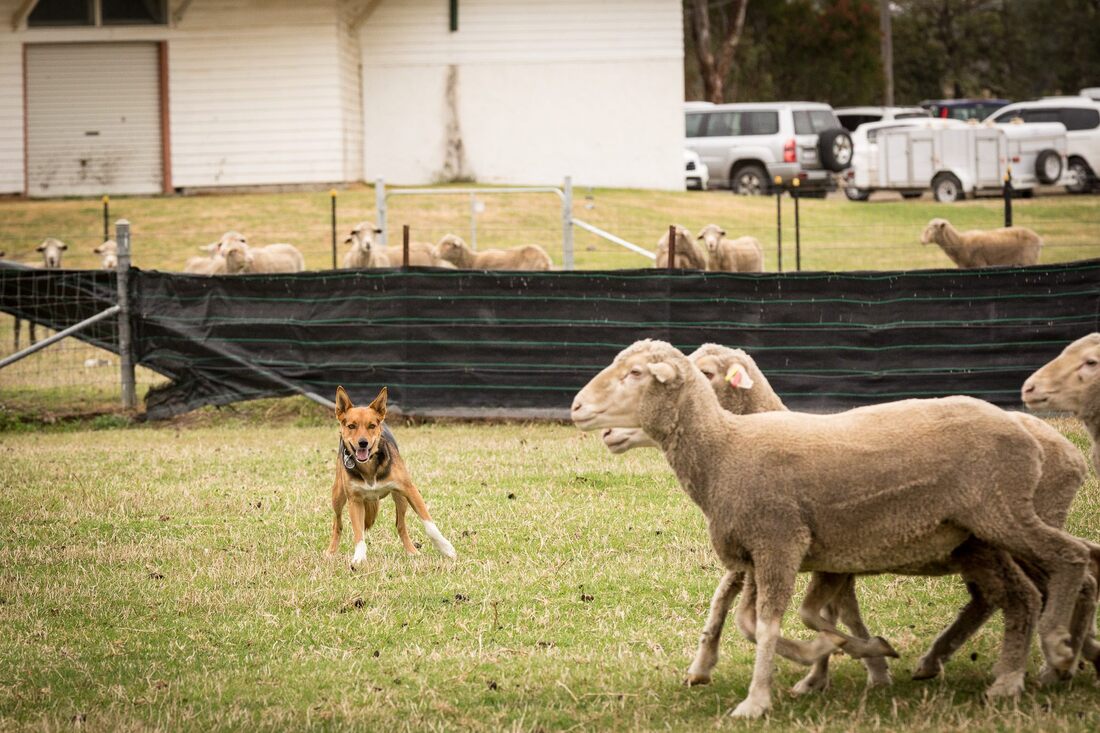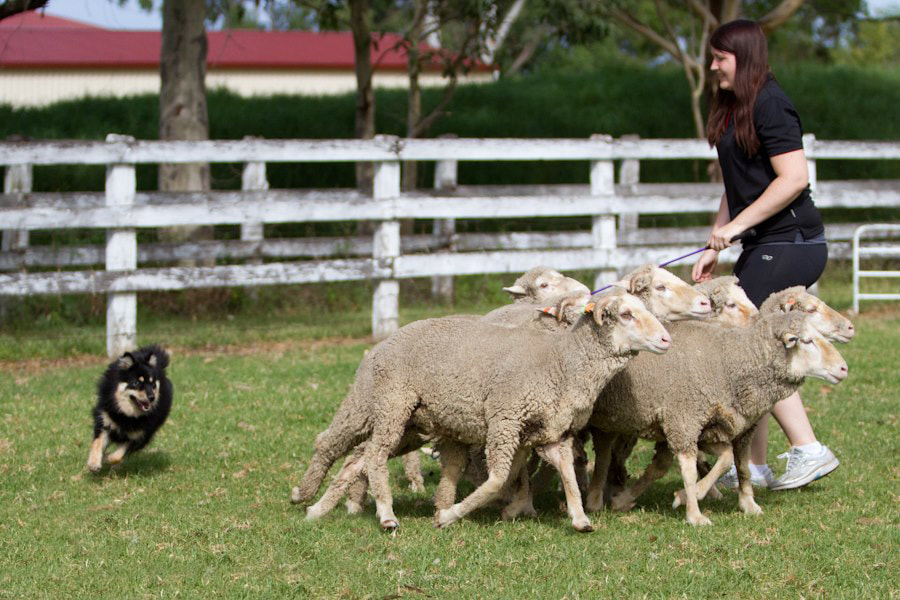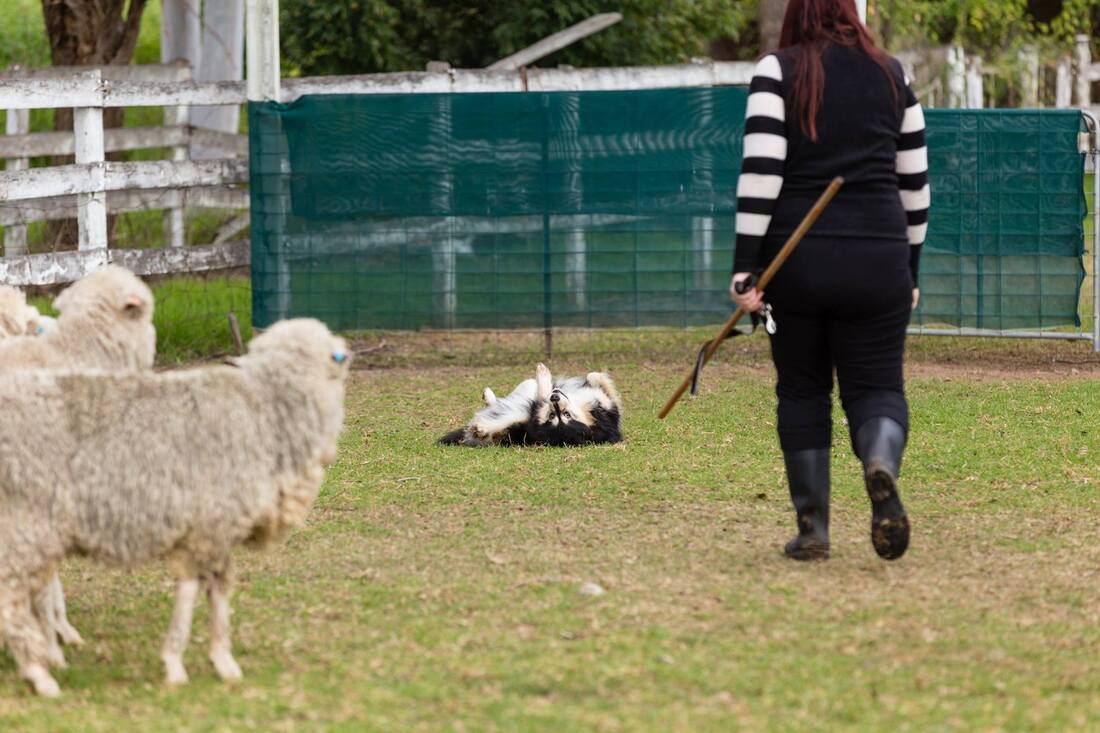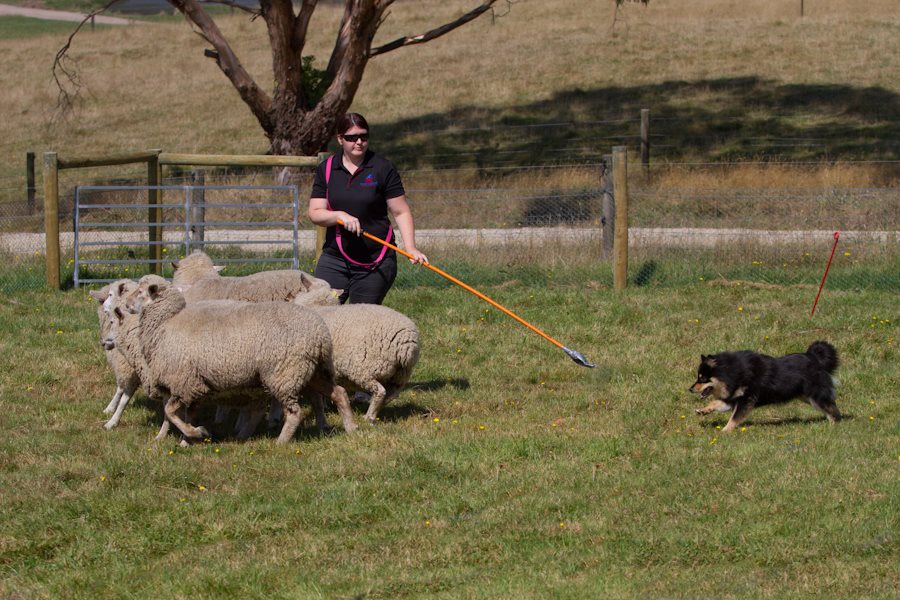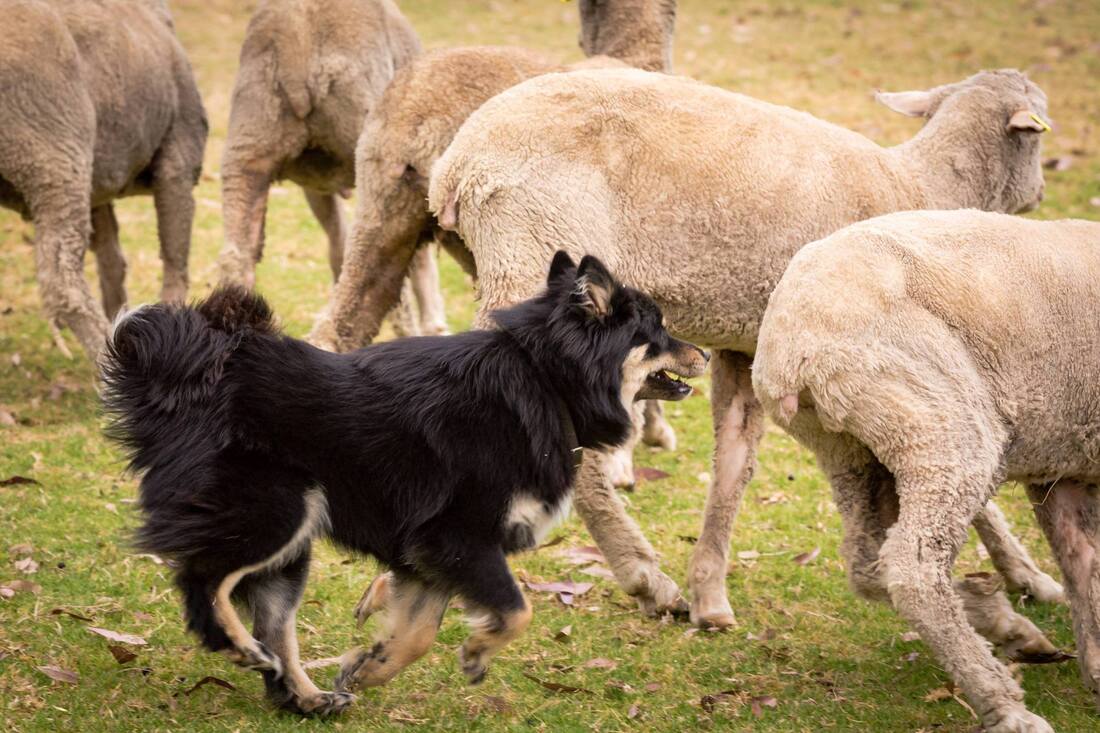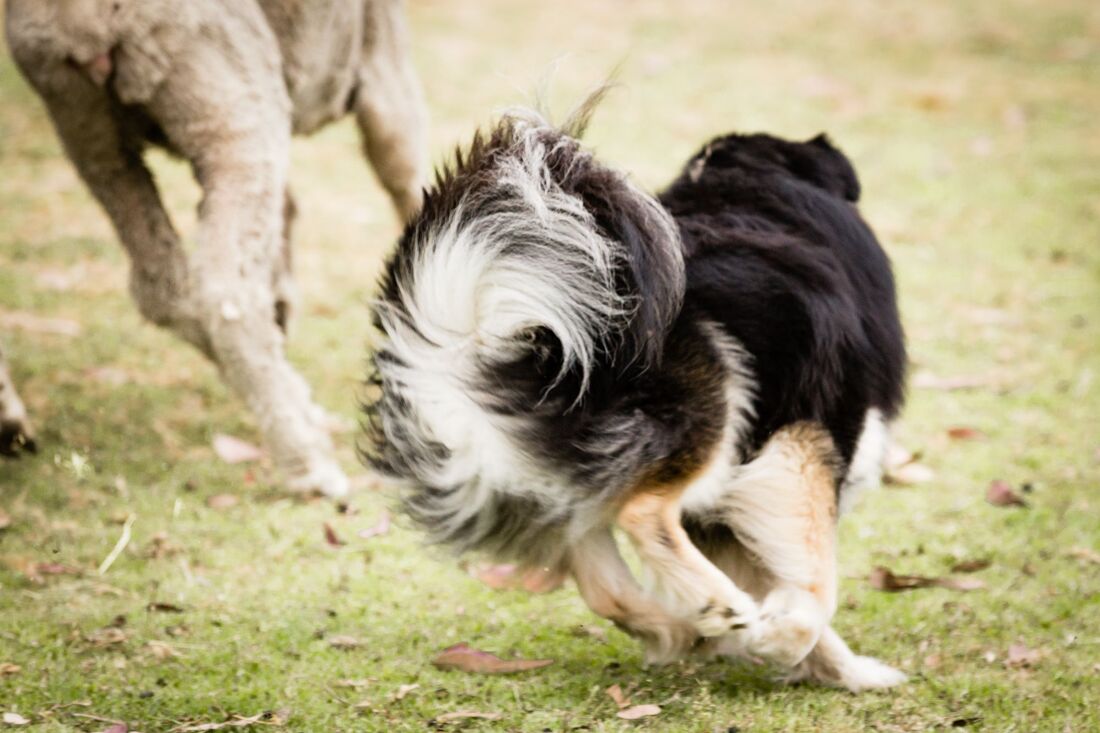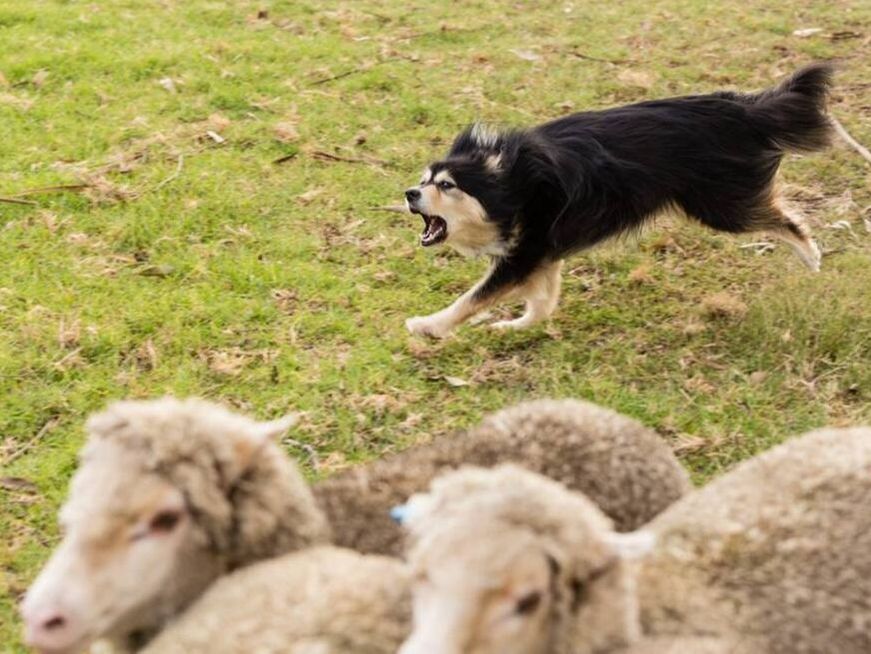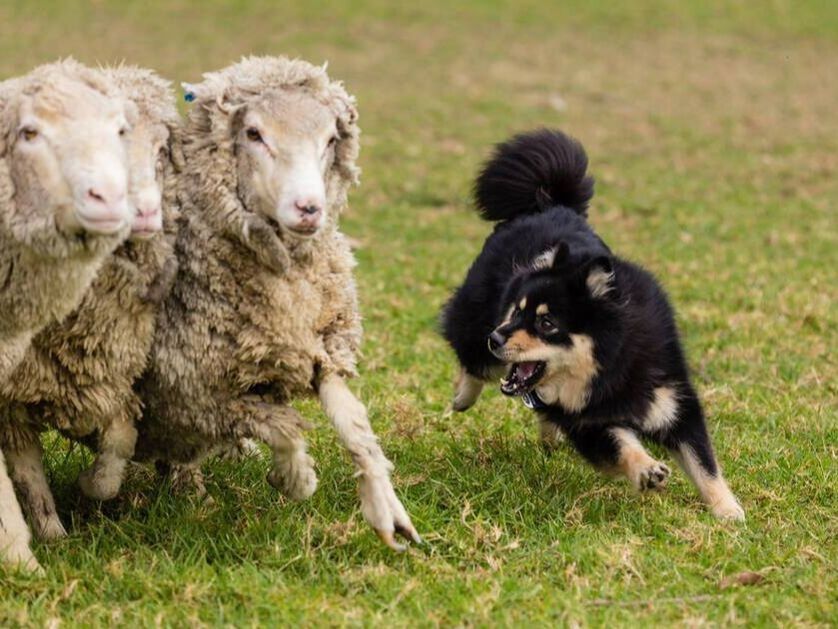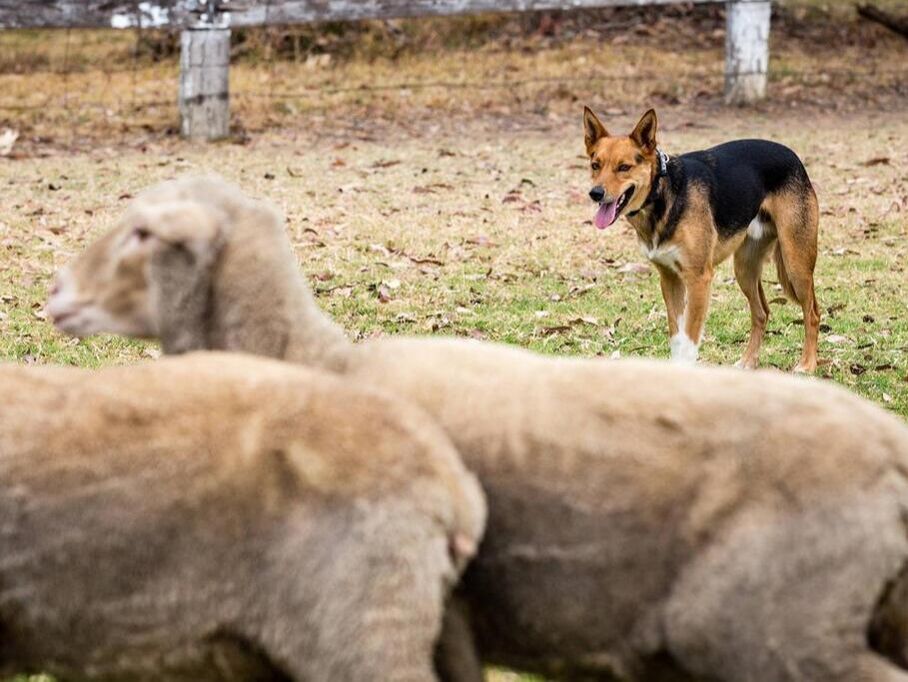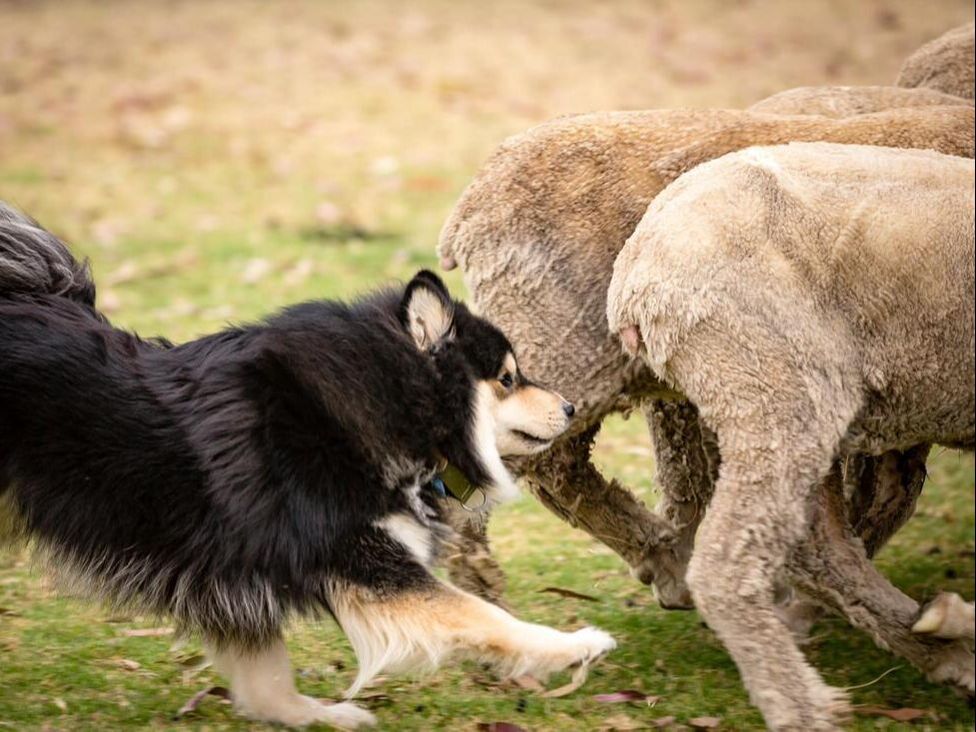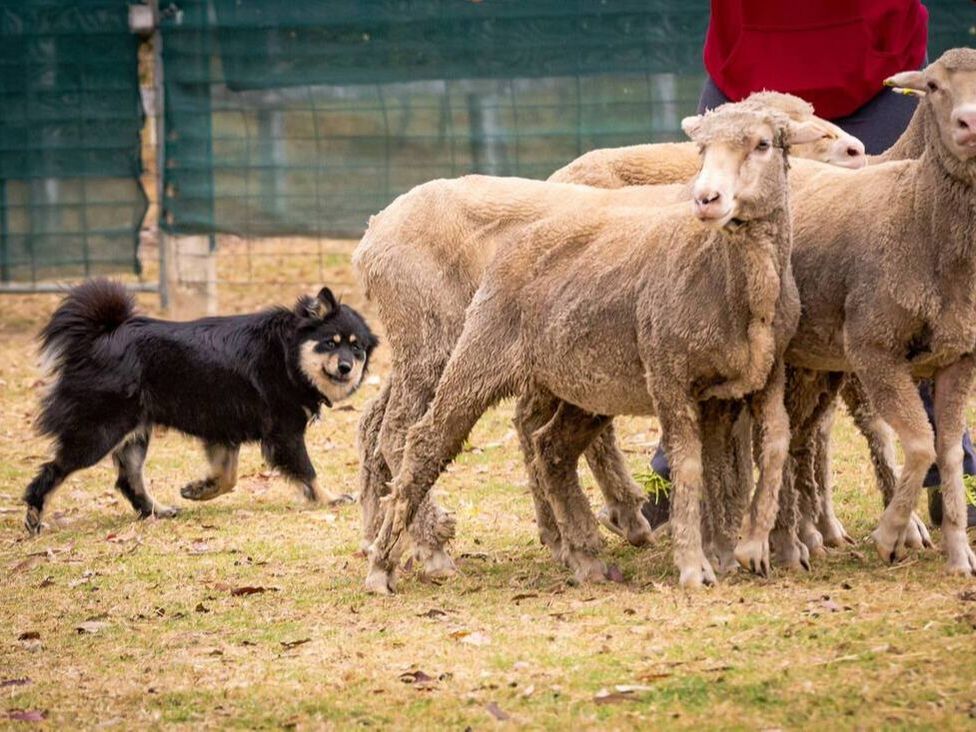What is herding?Of all of the dog sports that have been developed, herding is possibly the most famous of all. Working dogs are still utilised by farmers to manage their stock as they have been for hundreds of years - ANKC herding focuses on certain aspects of this work and aims to preserve the working ability and instinct of dogs whose original purpose was gathering, moving, protecting and driving different types of stock. It involves the dog controlling the movement of the stock (usually sheep, though cattle and ducks are also used) through different obstacles, which get progressively harder as the dog passes each level. There are three different streams, known as "courses", and each tests different skills and instincts.
Not all breeds are suitable to compete in ANKC herding, because they weren’t originally bred for it, and don’t have the instinct to work stock. The breeds that are eligible are all the breeds in ANKC group 5 as well as the Bernese Mountain Dog, Norwegian Elkhound, Samoyed, Keeshond, Kerry Blue, Tibetan and Soft Coated Wheaten Terriers and the Standard and Giant Schnauzer. Dogs on the associate register who are part herding breed or a mixture of herding breeds and dogs on the sporting register also qualify. |
Quick Facts
|
Training level required: ☆☆☆☆ (hard)
Training type: club training and private trainers Equipment cost: $ (inexpensive) |
Overseeing body: Australian National Kennel Council
Minimum age for competition: 6 months Breed restrictions: Only open to herding breeds |
What equipment do I need?There is little to no equipment for handlers to have for herding outside of a lead and collar, but obviously handlers will need sturdy shoes and farm appropriate clothing as well as access to at least one of the ANKC approved stock types - sheep, cows or ducks - which come with their own requirements. Space to work (yards and paddocks) and stock management requirements are the biggest hurdles to being able to compete in the sport.
|
How much training is needed?Herding and the amount of training needed to compete in the sport is very much breed dependent. While all the ANKC breeds who are eligible to compete in herding were originally used for that purpose, there are different styles of herding and different breeds may herd in very different ways. For example, an Australian Kelpie herds with a hard eye (almost always looking at the stock) and mostly herds in a crouched position, particularly when they are "holding" the stock. They will tend to move in large circles around the stock, often low to the ground, with long powerful strides. This style of herding is very common in ANKC herding and is more common for judges to see.
The style of herding that our Finnish Lapphunds were bred for is very different. They are an upright, loose eyed breed, which means that they move in a very different way and only really "switch on" to work the stock when they need to. Finnish Lapphunds also use their voices to move the stock, and so they will often bark a lot while working. This style of herding is less common for judges to see and may be frowned upon by some people who aren't used to dogs who work in a different way to the more common breeds. For more information about why Lappies are not bred to excel in the kind of herding that is required of dogs in ANKC herding, read our ANKC vs Herding Instinct Article. |
Titles
ANKC herding titles can be quite difficult to navigate if you don't know how the sport works. The test levels are simple - there are only two titles HT and PT and they are simple acronyms. Once you get into trial level herding, the titles are based on the level the dog is competing in (Started, novice, intermediate, advanced), how many passes they have achieved at that level (Started vs Started Master, Intermediate vs Intermediate Master), different courses (A course, B course and C course), as well as the stock used (sheep, cattle or ducks) and then these are combined to create the title. For example, a Started title, on A course, using sheep would earn the title of HSAs (Herding Started A-Course sheep). Earning the same title on a different stock adds the letter denoting the stock to the end of the title. For example, for a dog who earns their HSAs and then does the same Started title, on A course, but this time using ducks would have their HSAs title modified to be HSAds.
Dogs can hold multiple herding titles titles at the same time - so if they have earned their Herding Started Title on A Course on ducks and sheep, Herding Started Title on C Course on sheep and Herding Intermediate Title on B Course on sheep, they will have the following on the end of their name: HSAds HSCs HIBs
There are also several herding championships to be achieved. HCH requires the dog to achieve its HX title and then a further 5 passes on the same course same stock with scores of 85 or above. GRHCH requires the dog to hold an HCH and then gain further 5 passes on the same course with the same stock with scores of 85 or above. VHCH requires the dog to achieve 2 herding championships on different stock or different courses. VHCHX requires the dog to achieve 3 herding championships on different stock or course types.
Dogs can hold multiple herding titles titles at the same time - so if they have earned their Herding Started Title on A Course on ducks and sheep, Herding Started Title on C Course on sheep and Herding Intermediate Title on B Course on sheep, they will have the following on the end of their name: HSAds HSCs HIBs
There are also several herding championships to be achieved. HCH requires the dog to achieve its HX title and then a further 5 passes on the same course same stock with scores of 85 or above. GRHCH requires the dog to hold an HCH and then gain further 5 passes on the same course with the same stock with scores of 85 or above. VHCH requires the dog to achieve 2 herding championships on different stock or different courses. VHCHX requires the dog to achieve 3 herding championships on different stock or course types.
|
|
The first level of competition
Herding Instinct Certificate and Test LevelsThe first stage for any herding dog is to achieve its herding instinct certificate. This certificate is not a title, and does not appear on the dogs' name. More than a decade ago, prior to a rules change, there was a Herding Instinct Test (HIT) title which was applied to the dogs' name once they achieved it, so some breeders will still (incorrectly) include the HIC after a dogs' name on websites etc. The herding instinct certificate just requires a dog to show sustained interest in the stock, which all herding breed dogs should be able to do and not show aggression towards the stock.
Once the dog has achieved its HIC, it is then eligible to enter the test levels and handlers are able to choose which test the dog enters. For a lot of traditional herding breed handlers, they will move straight into the higher of these two tests - the Pre-Trial test (or PT) but for most non-traditional breeds, like our Finnish Lapphunds, we will put them into the Herding Test (HT) and work from there. HT is performed in a small yard and requires the dog to demonstrate that they can move and turn the stock both clockwise and counter clockwise around pylons at either end of the yard (generally performed as a figure 8), as well as show a "stop" (usually a sit or a down) and a call to the handler at the conclusion of the run. PT is performed in a paddock and involves the dog having to manoeuvre the stock through two obstacles, turn them around and manoeuvre them back through the obstacles, then put them in a pen. Dogs also have to show three stops - one as a controlled pause (generally done at the start), one on course and one while the handler opens the pen gate. Handlers can also choose to do the PT as a Boundary Test which is similar but the dog must contain the stock in a grazing area for 4 minutes before moving them around the course, through two gates and into a pen. Dogs also have to show the three stops in this version of the test. |
|
|
NSW Breeder Identification Number: B000685661 | Victoria Source Number: EE102260
Dogs NSW Member Number: 2100088743 |
© Pawformance 2023
|

